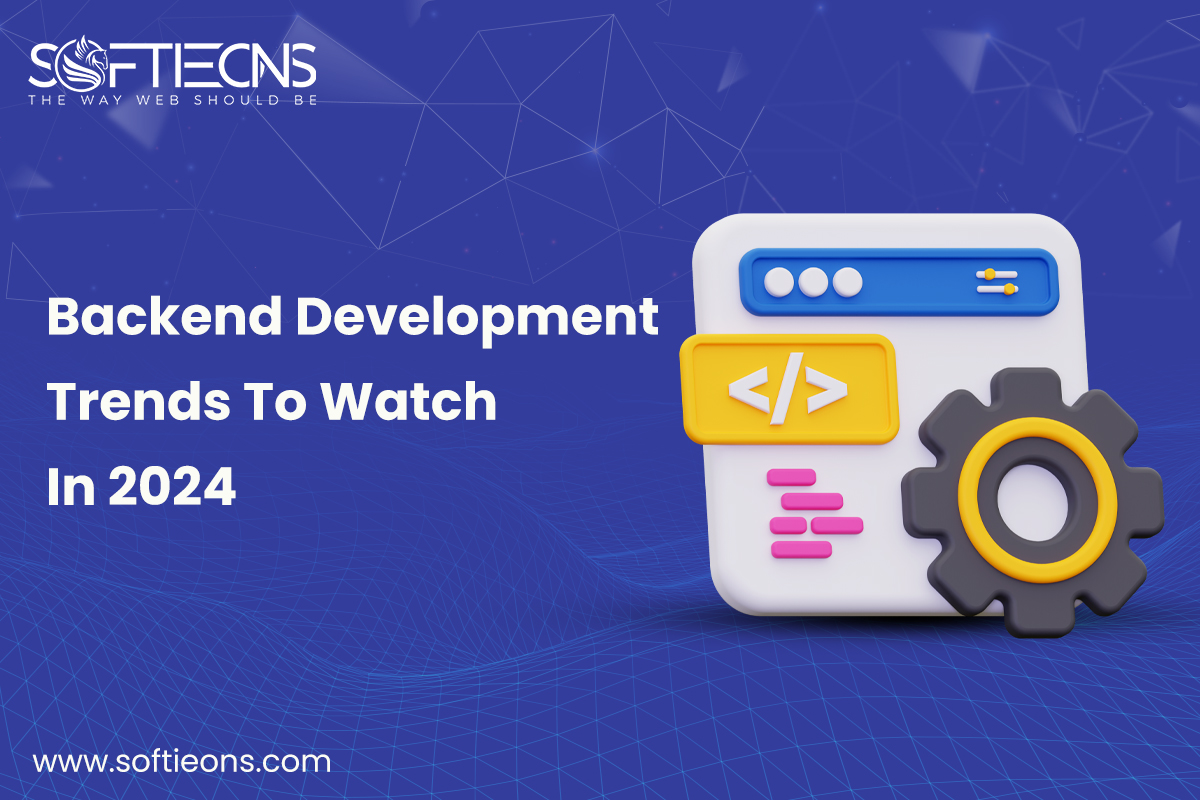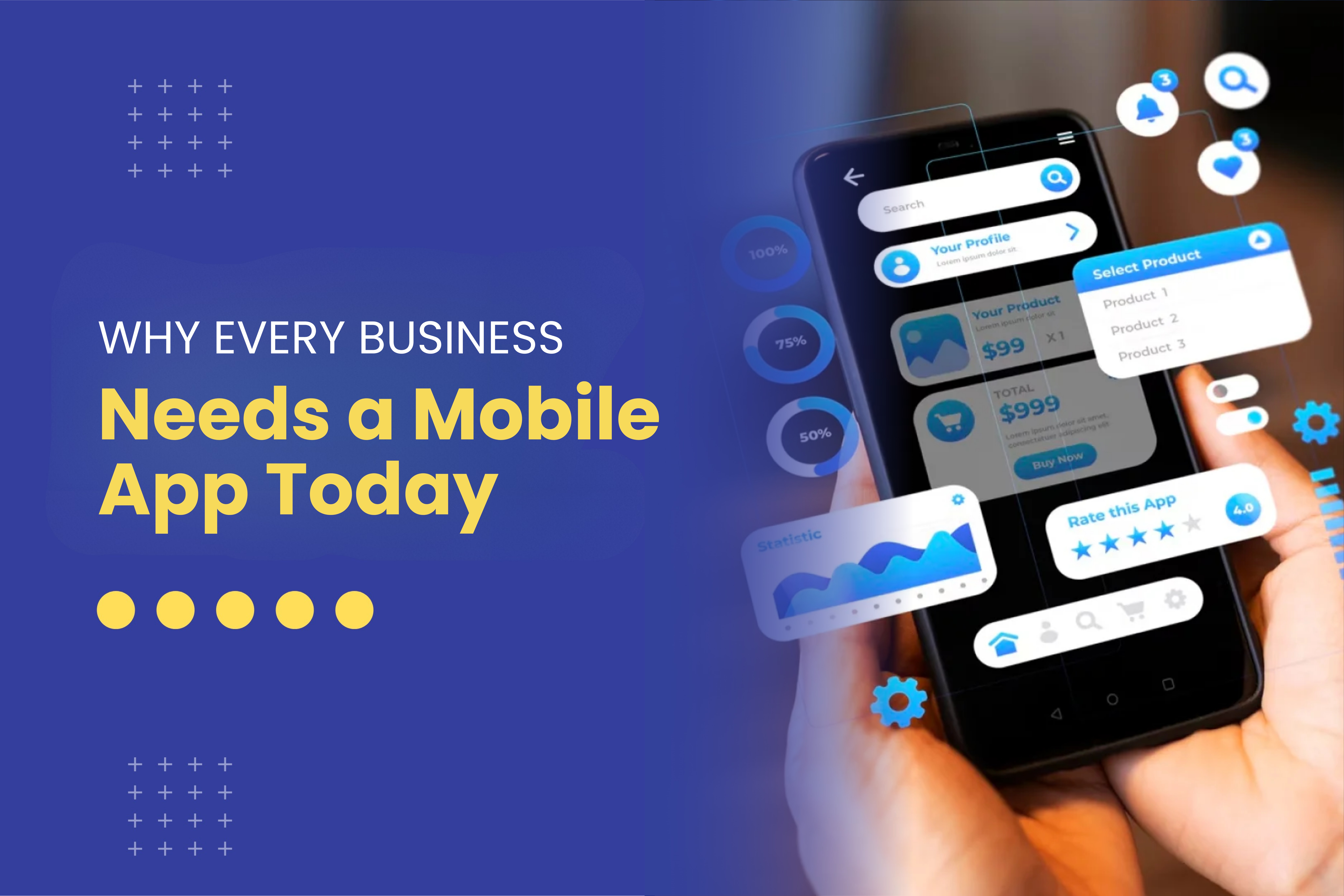Backend Development Trends to Watch in 2024
Thu, 05 Sep 2024
And this is perhaps still the most rapid-moving area going into 2024 backend development. In a way, it has determined the pattern of use by applications and also how businesses run in the background. This trend knowledge ahead means everything for ground-breaking companies of Softieons providing Business and Technical Back-end Development. Here is a sneak peek of some backend development trends to watch out for this year
1. Serverless Architecture
Serverless has gone from strength to strength, where a developer can build and run their applications without giving much thought to the management of infrastructure. This dream of scale and cost-savings with truly serverless designers has been led by AWS Lambda, Azure Functions, and Google Cloud Functions. You can see that is one of the most significant things that happened for backend development it brought simple deployment and scaling, giving a chance to developers just write code and not manage servers.
2. Microservices and API first development
The microservices architecture continues to be a popular method for developing scalable, flexible back-end solutions. It is the breaking apart of the applications into smaller chunks, where each stand-alone service can be deployed independently and updated separately. Consequently, this will work out well with API-first development. It codifies this fundamental principle of design beforehand in APIs. So, before a real backend is made, it will allow communication between services, which are sprinkled with seamless integrations.
3. AI and Machine Learning
The adoption of AI with machine learning at front-end systems is becoming quite ubiquitous. However, all this work is done on the back end to make processes functionally astute and subsequently more efficient through predictive analytics into automated decisions being made. New post by IT companies! By Softieons Who do you spend it on What kind of technological help do we get out there to offer intelligent back-end systems that learn, adjust, and give a more personalized, less-aggravating service?
4. Heightened Advance Data Protection
Security has become number one on the radar screen due to the increase in cyberattacks. The backend developers will be involved in implementing stronger security practices, including encryption and secure API, as well as performing regular security audits. Besides, strategies like Zero Trust Architecture are available to make certain that any requests, either coming from an internal or external channel upon access, are trusted & verified.
5. Cloud-Native Development
Cloud-native development is the disruption of back-end architecture, allowing cloud platforms to construct and scale applications. Particularly, docker and Kubernetes in this regard enable containerization with the orchestration of back-end services, making them able to scale up accordingly while matching trends alongside keeping resilience-based post-modern application evolving demands.
6. Edge Computing
Well, Edge computing has picked up a really good pace some use cases requiring real-time processing with the least possible latency. Additionally, it helps minimize the amount of data that the servers at the backend have to process, which further improves performance. This point is very relevant, at least as an example for IoT applications and real-time data analytics.
7. Adoption of GraphQL
Just lately, GraphQL has entered the stage and received widespread recognition as an authentic adversary to RESTful APIs. As it turns out, now with GraphQL querying with data would be so much easier and flexible as the client only asks for what they need. Just like a wink with the current trend, which focuses on the back-end to provide better efficiencies while retrieving data and problems caused by over-fetching or under-fetching.
8. Integration of Blockchain
Applications that need transparency, security, and decentralized data management are finding a place in back-end systems. Allow more space for developers of blockchain to come up with a secure and incorruptible back-end mechanism that would be greatly beneficial in domains like finance, supply chain management, etc.
9. DevOps and CI/CD Practices
The DevOps practices and the new genesis of Continuous Integration and Continuous Deployment pipelines were a dramatic change for backend development. That is agile delivery of backend services via continuous testing. Key Benefits of DevOps. Overall, Softieons is therefore able to show commitment towards such practices, thus making efficiency better along with a reduced time-to-market for backend solutions.
10. Server-side rendering and Static Site Generation
The bigger meaning that turns SSR and SSGs into the mainstream is that they help increase the SEO & performance of web apps in this modern era. Essentially, all methods mentioned are server- or build-based HTML generation approaches, after which the client-side rendering is always faster because of the short response time, which leads to a lower TTI and overall better UX.
Conclusion
Softieons and the like would be able to stay on top of trends in back-end development and keep their customers supplied with new and competitive methods. This helps improve the existing strengths of current backend systems and also caters to evolving scenarios in modern technologies. And it is a fact that should, on its own allow any firm to justify investment in.
POPULAR POSTS
Shopify vs. WordPress: Which one is best for e-commerce?
Wed, 07 Apr 2021Role of IoT in the Real Estate Industry
Wed, 14 Apr 2021Why UX And UI Is Important For Mobile Application Development
Sat, 01 May 2021Telemedicine's Advantages in Nursing Homes
Fri, 24 Dec 2021RECENT POSTS
PHP & Laravel Web Development | Build Secure & Scalable Websites
Thu, 18 Dec 2025Why Every Business Needs a Mobile App Today
Thu, 18 Dec 2025Title: Run Your Entire Real Estate Business From Your Phone
Fri, 12 Dec 2025









